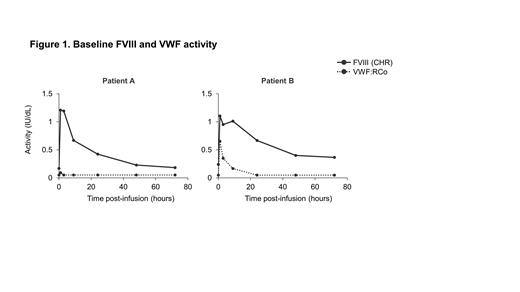Background: Long-term prophylaxis with a von Willebrand factor (VWF) concentrate is recommended in people with von Willebrand disease (VWD) with a history of frequent and severe bleeds. The WIL-31 study demonstrated the efficacy of prophylaxis with a plasma-derived VWF/factor VIII (pdVWF/FVIII) concentrate containing VWF and FVIII in a 1:1 activity ratio (wilate ®) in adults and children with VWD of all types. The primary endpoint was met, showing a decrease in mean total annualized bleeding rate (ABR) of 84% compared with prior on-demand treatment.
Aim: To assess the immunogenicity of pdVWF/FVIII when used during the WIL-31 study in children and adults with VWD of all types.
Methods: WIL-31 (NCT04052698) was a prospective, non-controlled, international, multicenter phase 3 trial that enrolled male/female patients aged ≥6 years with VWD type 1 (VWF: RCo <30 IU/dL), type 2 (except 2N) or type 3. Prior to entering the WIL-31 study, all patients had received on-demand treatment with a VWF-containing product during a 6-month, prospective, observational, run-in study (WIL-29); patients who experienced at least 6 bleeding episodes (BEs), excluding menstrual bleeds, of which ≥2 were treated with a VWF-containing product, were eligible to enter WIL-31. During WIL-31, patients received regular pdVWF/FVIII (containing VWF and FVIII in a 1:1 activity ratio) prophylaxis 2-3 times per week at a dose of 20-40 IU/kg for 12 months. FVIII (chromogenic and one-stage assays) and VWF (VWF:RCo assay) activities were assessed at baseline and throughout the study. Retention samples were collected at screening and baseline visits for possible later inhibitor testing (to be performed at a central laboratory using the Nijmegen-Bethesda assay for FVIII inhibitors and the mixing study based on VWF:RCo for VWF inhibitors). Inhibitor testing was also performed if inhibitor development was suspected.
Results: Inhibitor testing was performed in 2 of 33 patients because of unusual pharmacokinetic results at the 6-month visits, even though neither patient had any clinical signs of an inhibitor. The VWF inhibitors were detected in samples from two brothers taken at their 6-month visits. However, when retained blood samples from the screening visits of both boys were tested, both samples tested inhibitor-positive, demonstrating that both boys had developed the inhibitors prior to starting prophylaxis during WIL-31. During and before the WIL-29 run-in study, both boys had been treated on demand with another pdVWF/FVIII concentrate.
The boys had both been diagnosed with VWD shortly after birth, and it was suspected that they had type 2A based on family history and were 15 (patient A) and 11 years old (patient B) at the start of WIL-31. They had a family history of VWD (both parents were diagnosed with VWD), but no family history of inhibitors. After the completion of WIL-31, both patients were reclassified to type 3 VWD following further investigation including next-generation sequencing. Baseline VWF activity indicated low VWF:RCo levels (Patient A: 0.092 IU/mL and Patient B: 0.65 IU/mL; Figure 1). The boys received 38 (patient A) and 34 IU/kg (patient B) pdVWF/FVIII respectively, twice weekly during WIL-31, and their mean total ABRs decreased by 85% and 91%, respectively, during WIL-31 compared with WIL-29. All bleeding episodes during WIL-31 were spontaneous nose bleeds. Both boys continued the same prophylactic regimen until the end of WIL-31. In one patient the inhibitor titer was negative by the end of the study.
Conclusion: VWF inhibitors were detected in 2 of the 33 patients on prophylaxis with pdVWF/FVIII in the WIL-31 study and subsequent investigation revealed that both patients were already positive for VWF inhibitors prior to the study start. In one of the patients, the inhibitor resolved during continued prophylaxis. Despite the inhibitors, prophylaxis was effective in both patients with an ≥85% reduction in ABR compared to on demand treatment.
OffLabel Disclosure:
Khayat:Octapharma: Honoraria; CSL Behring: Honoraria; LFB: Honoraria. Sidonio:Octapharma: Honoraria, Research Funding; Takeda: Honoraria, Research Funding; Guardian Therapeutics: Honoraria; Bayer: Honoraria; Novo Nordisk: Honoraria; UniQure: Honoraria; Biomarin: Honoraria; Spark: Honoraria; Pfizer: Honoraria; Genentech: Honoraria, Research Funding.
This study is investigating the use of a VWF / FVIII concentrate for the prevention of bleeds in patients with von Willebrand disease of any type


This feature is available to Subscribers Only
Sign In or Create an Account Close Modal